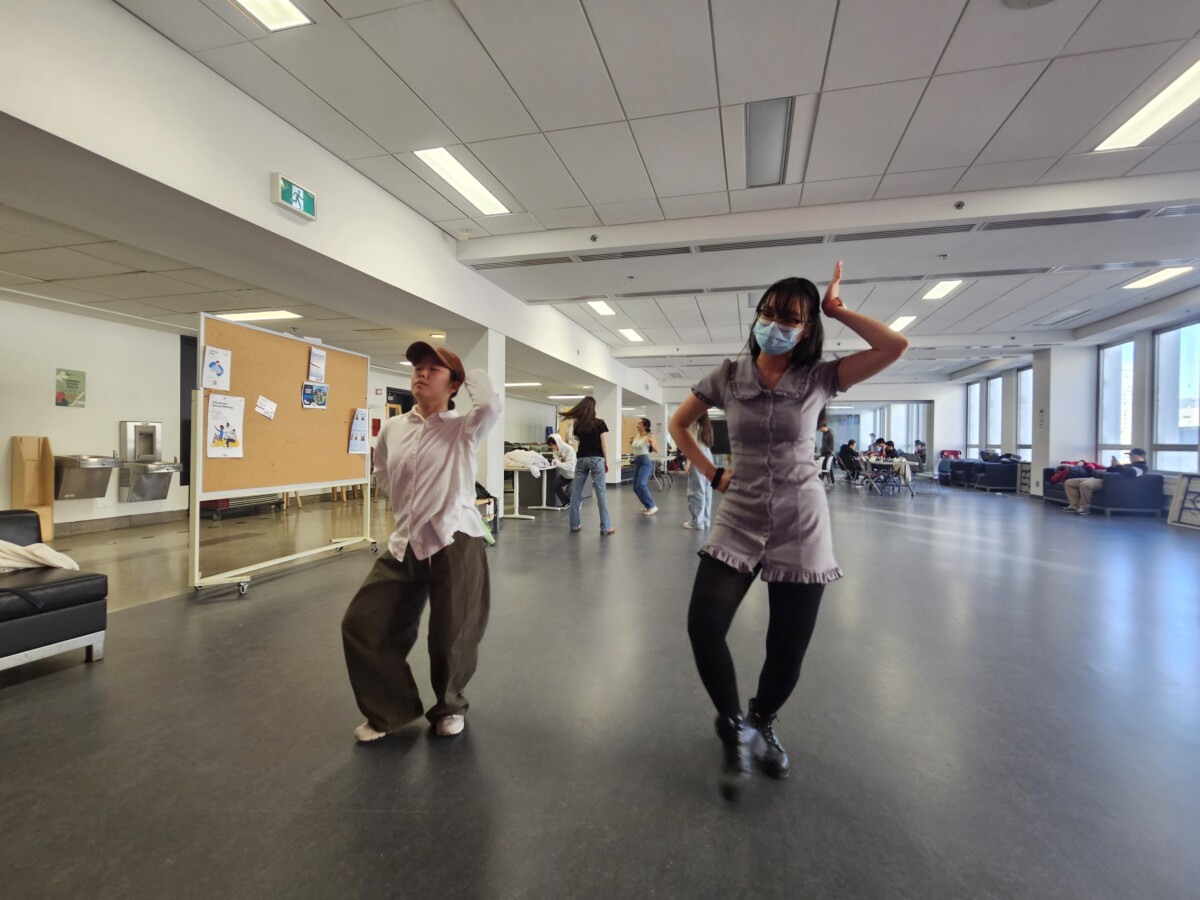Members of the Concordia K-pop Club gain the confidence to express themselves by dancing to their favourite K-pop choreographies
The crowd is excited, the stage is lit, and K-pop is blasting through the nightclub’s speakers. For first-year Concordia University student Lana Masselon, this memory makes her eyes sparkle with joy as she talks about K-pop events that she has attended around Montreal.
Dancing to K-pop has given her the confidence to overcome her fear, go up on stage, and dance in front of a large audience. This is thanks to the Concordia K-pop Club, which holds several dance workshops throughout the fall and winter semesters. They invite members and non-members to learn choreographies from the community’s favourite K-pop groups and to be true to themselves through dance.
Masselon attends most of these dance workshops and sometimes even teaches them. She has a modern-jazz dance background but fell in love with K-pop when she learned choreography to the song ‘Kill This Love’ by Blackpink. This inspired her to take a K-pop dance class.
However, since starting university, she has not had the time to keep up with weekly lessons. She said that the workshops sprinkled throughout the school year provide her the opportunity to get exercise and give her a sense of accomplishment.
“If I’m active, I’m happy. I know I need to be active, and K-pop helps keep sports in my life,” Masselon said.
She said she has found her identity through being accepted by the K-pop community. It has allowed her to break free of society’s status quo.
“Before K-pop, I felt like I didn’t have a style. I just followed what everyone else was doing, and I wasn’t really myself,” she said.
As a taller person, Masselon hid behind clothes she hated, such as jeans, when she wanted to wear clothes like skirts and knee-high socks. One of her favourite K-pop idols, Kim Hongjoong from the group ATEEZ, inspired her to feel more comfortable in her skin.
“I was uncomfortable and scared about what people would think of me,” Masselon said. “Hongjoong says you can wear anything, as long as you feel confident in it, so I don’t try to hide myself anymore.”
She believes that dance brings the K-pop community together, allowing people to meet new friends and bond over common interests.
Other club members feel the beneficial effects that the dance workshops have on their lives too. Concordia K-pop Club President Inas Fawzi strongly feels that the dance workshops have built her confidence more.
“After learning K-pop dances, I started liking my body. It gave me a love for my physical being. Before I was just floating, I wasn’t attached to it. Now I’m like, ‘Wow, I look cool,’” Fawzi said.
Amanda Beronilla, the club’s vice president of communications, also teaches dance workshops. She says that dancing to K-pop is one of the main ways that she can express herself.
“Ever since I was small, I have always loved dancing. I wanted to go into ballet, but I was never able to. With K-pop dance, it feels like I’m able to do something that I’ve always wanted to do,” Beronilla said.
The dance workshops are fun and inclusive. Unlike a K-pop dance crew with high standards, these dance workshops are very welcoming. There’s little pressure, and people are encouraged to come and join in, regardless of their dance skills.
Each two-hour dance workshop is held at Concordia University’s Sir George Williams Campus on the Hall Building’s seventh floor.
You can follow the Concordia K-pop Club on Instagram to learn about upcoming events.
